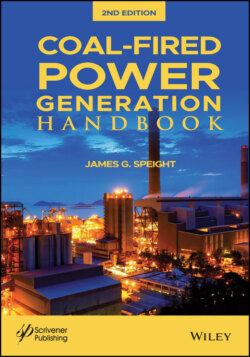Читать книгу Coal-Fired Power Generation Handbook - James Speight G., James G. Speight - Страница 42
2.4.1 Vitrinite Group
ОглавлениеThe maceral that fall into the vitrinite group are derived from the humification of woody tissues and can either possess remnant cell structures or be structureless. The structureless maceral could have resulted due to the degradation process that takes place during coal diagenesis. Chemically it is composed of natural (so-called) polymers, cellulose and lignin. Vitrinite has a shiny appearance resembling glass (vitreous).
The variation in vitrinite macerals is usually thought to be due to differences in the original plant material or to different conditions of alteration at the peat stage or during coalification. In this group, only three macerals are distinguished: (i) telenite, (ii) collinite, and (iii) vitrodetrinite. Vitrinite contains more oxygen than the other macerals at any given rank level and is prone to gas generation with densities ranging from 1.3 to 1.8 g/cm3 with a general tendency to increase with an increase in rank increases.
The telenite maceral came from different tree branches, trunks, stems, leaves and roots. The collinite maceral is formed from gel precipitated in humic solution obtained from humic particles that were degraded in the early stages of coalification. The vitrodetrinite maceral is also obtained from plants that were degraded from the early stages of coalification but this time around earlier than the stage in obtaining collinite. The concentration of hydrogen in this vitrodentrite is the range of 4.5 to 5.5%, w/w oxygen from 5 to 20% w/w, and carbon in the range of 75 to 95% w/w.
